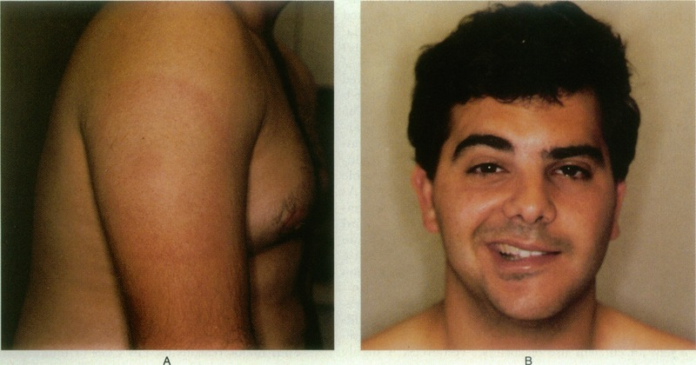Lyme disease with erythema chronicum migrans and bell’s palsy
Lyme disease is an infectious disease transmitted to humans by an infected black-legged or deer tick bite. The tick becomes infected with Borrelia burgdorferi. B. burgdorferi after feeding on infected deer, birds and mice. For the infection to transmit, the tick needs to be present on the skin for at least 36 hours. For this reason, in several cases, many people have no memory of a tick bite.
The disease was first recognised in 1975 in the town of Old Lyme. Most cases are reported in Europe and United States. People who live in wooden areas are more likely to get the illness and are known for transmission of disease. People living with domesticated animals who visit wooded areas are also at an increased risk of getting lyme disease.
Case study
In this case a young man presented with two common symptoms of early lyme disease. Examination findings were consistent with skin lesion on his arm known as erythema chronicum migrans and Bell’s palsy resulting in left sided facial droop. About 5% of patients with lyme disease may develop facial weakness where both or one side of the face may droop. This is referred to as lyme disease associated facial palsy. This occurs 21 days after being exposed to the tick. Whereas erythema chornicum migrans also appears in the early stages of disease in 70 to 80% of the patients.
People with disease react to it differently with different symptoms. Although the disease is divided into three stages, early localised, early disseminated and late disseminated, the symptoms can also overlap. Some people also present with just the later stages of disease without the earlier symptoms. Treatment shows favourable prognosis during the early stages of disease. In early stages patients are treated with a 10 to 14-day course of oral antibiotics to eliminate the infection. First-line treatment includes doxycycline, amoxicillin or cefuroxime. The medications are typically switched to an oral regimen after improvement. The usual time of treatment is 14 to 28 days.
Source: NEJM




